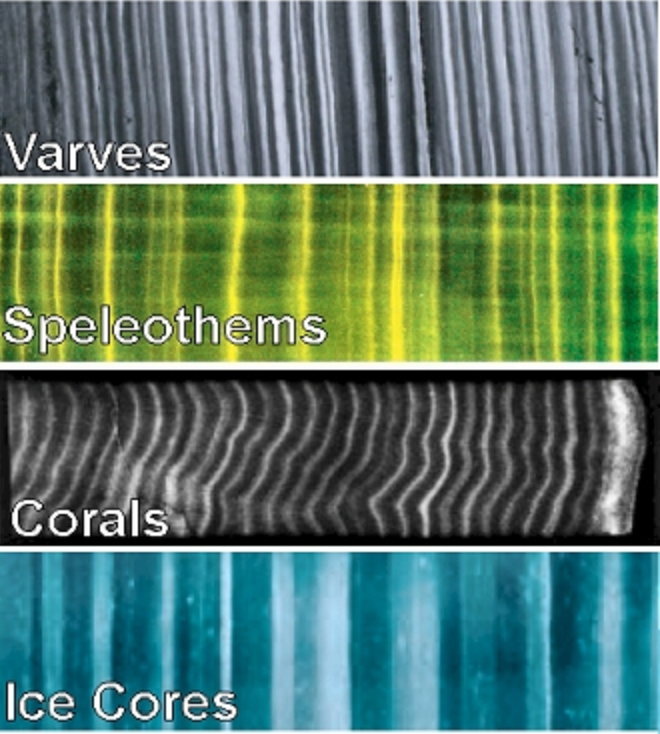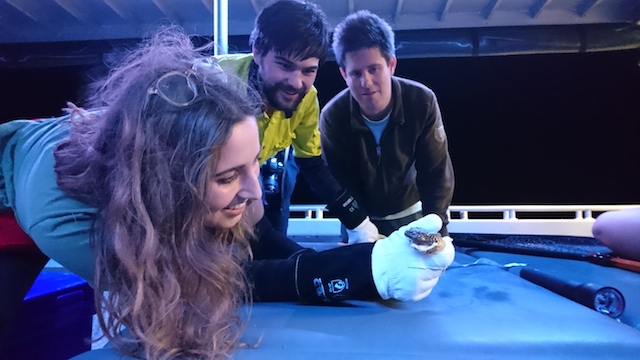There are a number of exciting PhD opportunities related to palaeoclimatology, geochemistry and Quaternary science are on offer at the University of Adelaide.
Applicants will be required to successfully apply for an Australian Postgraduate Award (APA), for which the deadline is October 31st, 2014.
Depending on the project, postgraduates will be enrolled either in the Department of Earth Sciences (currently School of Earth and Environmental Sciences), or the Discipline of Geography, Environment and Population. All projects fall under the wider umbrella of the Sprigg Geobiology Centre, and there will be opportunities to engage with other research centres at the university.
A number of specific projects are available, and these are listed below. However if you have your own ideas, please feel free to get in touch.
Projects:
- Using conventional and clumped isotope geochemistry from lake sediments to unravel lateglacial temperature and hydrological change in southeastern Australia. This project will be linked to the ARC Discovery Project “The application of clumped isotope thermometry to the terrestrial environment”, in collaboration with Allan Chivas (Wollongong) and Russell Drysdale (Melbourne). It will seek to apply a number of novel and established techniques to reconstruct climate variability during the last 20,000 years. Contact: Jonathan Tyler (jonathan.tyler@adelaide.edu.au).
- Mollusc sclerochronology as a means of deciphering sub-annual hydrological change in the Lower Murray. The geochemical analysis of annual carbonate growth increments within modern and fossil molluscs is a rapidly expanding field, offering potential to derive sub-annual palaeoclimate data over thousands of years. This project will seek to validate and apply the technique to wetlands in southeastern Australia, in collaboration with Bronwyn Gillanders (Adelaide). Analytical costs are funded in part by a Mark Mitchell Foundation grant. Contact: Jonathan Tyler (jonathan.tyler@adelaide.edu.au).
- Laminated lake sediments as an archive of high resolution climate variability during the last 2000 years in Australia. Precisely dated, highly resolved and quantitative hydrological records are critically scarce in Australia. This project will seek to exploit a number of laminated lake sediment records, applying micro-facies and geochemical tools, to obtain palaeoclimate data at possibly annual resolution. Contact: Jonathan Tyler (jonathan.tyler@adelaide.edu.au).
- Isotope ratios of fossilized leaf waxes as a palaeoaridity index. Carbon and hydrogen isotope ratios of leaf wax lipids are related to the plant’s growth environment. This project will use these relationships to reconstruct aridity changes during the Cenozoic of Australia and New Zealand. Linked to ARC Future Fellowship “Palaeoclimate reconstructions from the isotopic signatures of fossil leaf waxes”. Contact: Francesca McInerney (cesca.mcinerney@adelaide.edu.au).
- Modern calibration of the isotope ratios of leaves as rain gauges. This project will take a multi-isotope approach to leaves as recorders of precipitation, employing carbon, hydrogen and oxygen of cellulose from modern leaves. The aim will be to develop a proxy relevant to Quaternary palaeoclimate records of Australia. Linked to ARC Future Fellowship “Palaeoclimate reconstructions from the isotopic signatures of fossil leaf waxes”. Contact: Francesca McInerney (cesca.mcinerney@adelaide.edu.au).
- Reconstructing Australian megafaunal extinction histories using luminescence dating techniques. This project would aim to establish temporal constraints on long-term megafaunal turnovers and palaeoenvironmental change at Late, Middle and Early Pleistocene sites across South Australia. The PhD student would be responsible for undertaking detailed regional-scale chronological reconstructions, as well as site-specific studies, and would be expected to pursue advancements in luminescence dating methodological research. The study would by linked to ARC Future Fellowship “Trying times: Millennial to million year chronologies for improved reconstructions of Australian megafaunal extinctions.” Contact: Lee Arnold (lee.arnold@adelaide.edu.au)
- High-resolution numerical chronologies of climate and environmental change in southeast Queensland spanning the last glacial cycle. This project would focus on single-grain OSL dating of lacustrine and coastal sedimentary sequences from North Stradbroke Island. The project will form part of a broader, multi-proxy study of the North Stradbroke Island lakes records led by John Tibby. Contact: Lee Arnold (lee.arnold@adelaide.edu.au).
- Environmental change in the sub-tropics through the last glacial cycle. During the last glacial cycle people inhabited the Australian continent, the last of the megafauna became extinct and climate underwent large fluctuations. This project seeks to document environmental responses to these changes via analysis of new >100,000 year long wetland sequences on North Stradbroke Island. Contact: John Tibby (john.tibby@adelaide.edu.au)
- Biogenesis of soils. Recent biogeochemical studies in sand dunes of south west Western Australia challenge the traditional paradigm that clay B horizons, ferricretes and calcretes are formed principally by physico-chemical weathering, illuviation and/or sedimentological processes. This project seeks to test the biotic influence using techniques such as stable isotope geochemistry, resistant mineral weathering, and TL dating. Contact David Chittleborough (david.chittleborough@adelaide.edu.au)
- Luminescence dating using zircons. The potential for luminescence from zircon grains to provide a robust means of archaeological and geological dating with unique advantages over other techniques is an intriguing concept which has been recognised in the scientific literature for over 40 years, but without becoming a reality. The objective of this project is to apply the novel “Photon-Counting Imaging System” (PCIS) to investigate the potential for dating the time of deposition of a biologically-modified sediment deposit from Lake Chillinup, WA, using luminescence from zircon grains extracted from the sediment. Contact Nigel Spooner (nigel.spooner@adelaide.edu.au) or David Chittleborough (david.chittleborough@adelaide.edu.au).



